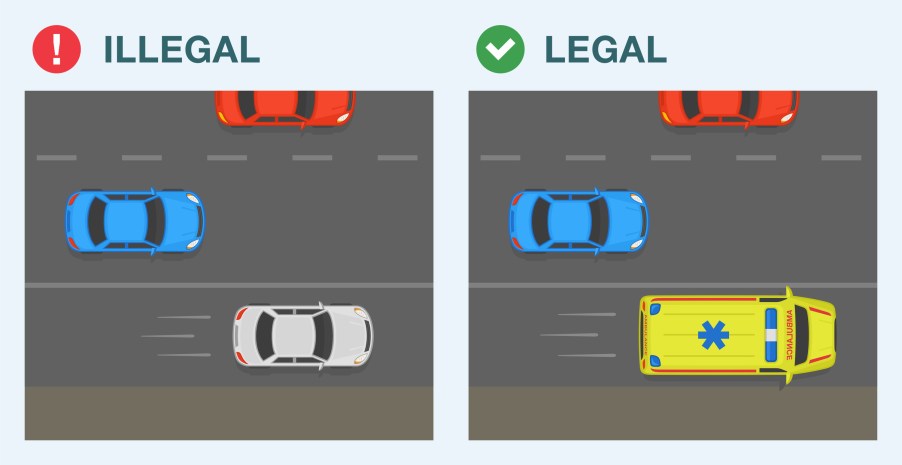
Is It Illegal for Police Officers to Drive in the Emergency Lane?
Admit it, you’ve been stuck in traffic on the highway and considered taking the emergency lane to get around all the other cars. However, isn’t it illegal for drivers to use the emergency lane? Can police officers use it?
Is it illegal for police officers to use the emergency lane?
No, it’s not illegal for police officers to use the emergency lane. It’s there for emergency vehicles like squad cars, ambulances, and firetrucks to take advantage of during emergencies.
While police cars travel to an emergency, they are allowed to speed, run red lights, drive in the median, and drive on the shoulder lane to get to the scene of an accident as fast as possible.
But first responders don’t always use the outside lane to get around traffic. In some states, drivers are subject to the Move Over Law.
The law requires drivers to slow down while cautiously approaching an emergency vehicle;e that’s stopped on the shoulder of the road with its lights flashing.
Motorists are required to move over to a different lane, away from the emergency vehicle on a multi-lane highway, or to slow down on a two-lane highway.

If an emergency vehicle approaches from the rear you should slow pull over and stop until it passes. You may notice the flashing lights and hear the sirens from behind.
The first responder gets to utilize all available road space. This applies to every vehicle on the road, regardless of the direction of travel.
However, if you’re on a four-lane highway that’s divided by a median, cars traveling in the opposite direction of emergency vehicles do not have to stop.
Failure to move out of the way can result in fines and a court appearance. It could be considered reckless or negligent driving.
If an officer or first responder asks you to move into the emergency lane, then move over. You can also pull over on the shoulder to park and wait for help.
The lane serves as a safe place to wait for help and allows officers to get to the scene of an accident faster. No one should use it unless there is an emergency, and civilians could get in trouble.



